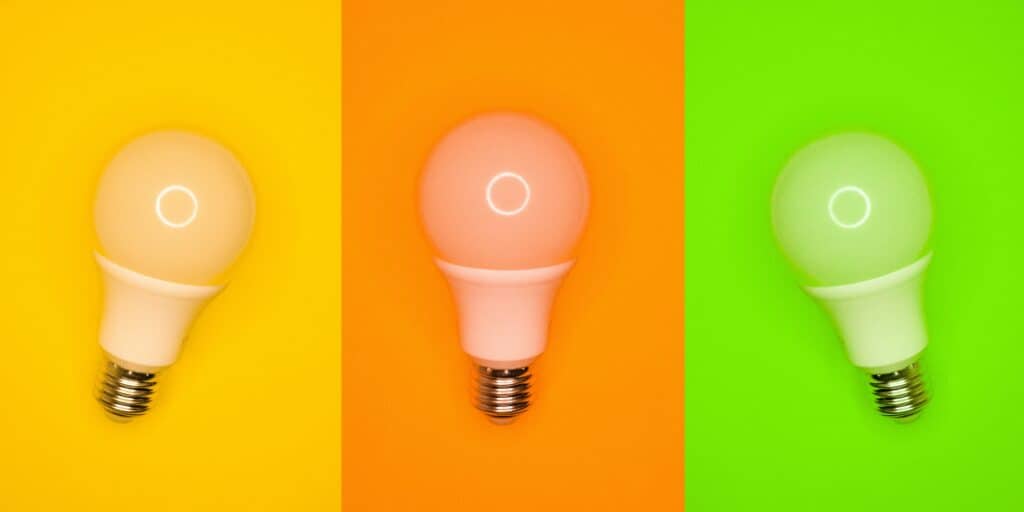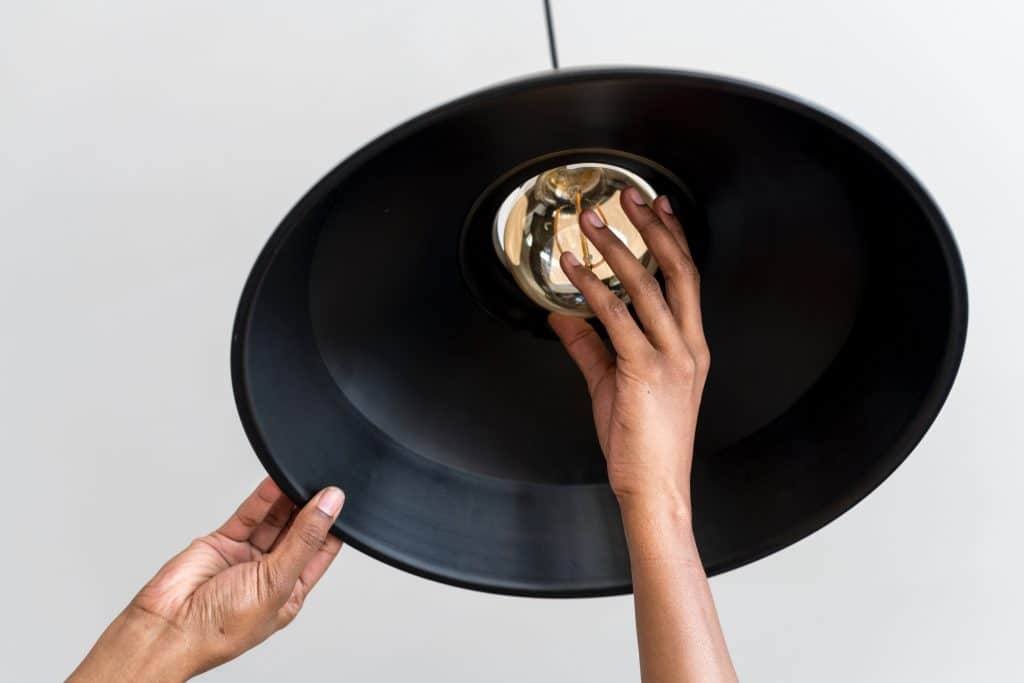Once upon a time all you needed to know about a lightbulb was how many watts you wanted. But lightbulbs today give you many high tech choices. If you don’t know what you are doing you’ll get too few lumens, too many kelvin and shadows where you don’t want them. If it fits in the first place that is.

If you want to change a light bulb, you’d better know more than your watts. This is day 14 of the 30 day shrink. Hey this is Lindsey Shrinkdown footprint and in today’s video I’m going to show you five simple strategies to make sure you get the right energy saving light bulb. But first up, let’s look at how not to change a light bulb. If you haven’t switched to low energy light bulbs like CFLs and LEDs yet, then your electricity cost is probably about 10 or 15 percent of your total bill. But if you switch to these new technologies, you can drop that particular cost by about 80 percent. Unlike a decade ago, your lighting options with CFLs and LEDs in particular are far, far better and much more affordable.
If you want to change a light bulb, you’d better know more than your watts. This is day 14 of the 30 day shrink. Hey this is Lindsey Shrinkdown footprint and in today’s video I’m going to show you five simple strategies to make sure you get the right energy saving light bulb. But first up, let’s look at how not to change a light bulb. If you haven’t switched to low energy light bulbs like CFLs and LEDs yet, then your electricity cost is probably about 10 or 15 percent of your total bill. But if you switch to these new technologies, you can drop that particular cost by about 80 percent. Unlike a decade ago, your lighting options with CFLs and LEDs in particular are far, far better and much more affordable.
When choosing a new light bulb, it is easy to make mistakes. To avoid this, here are five tips: 1. Know the fitting type (b22 or e27, for example) 2. Consider the shape of the bulb- how wide or narrow a beam it will create 3. Consider how much energy the bulb will use 4. Get the right light bulb to get the right light beam 5. Follow these tips to make sure you get the right light bulb!
It’s no longer good enough to think in terms of watts. You need to think of your lighting needs in terms of lumens. The next couple of charts show you how many lumens you’ll need to get the equivalent amount of light to a standard bulb that you might have been used to. This first chart is for countries using the low 120 voltage system like the US, and this second chart helps people using the 240 volt system in places like Europe convert from traditional wattage to lumens. The warmth of light is measured in degrees Kelvin in most home applications. People generally want a warm white which is 2700 or 3000 degrees Kelvin.

In some modern applications, like kitchens and showy design, you might want something like 4000 or 5000 Kelvin compact fluorescent lights. These are very cheap these days and you’re not going to go wrong on cost there. But although the price of LEDs has come down dramatically in the last two years, it is still possible to pay far too much for an LED. This chart shows the payback time in years for switching a 60 watt incandescent bulb to a 10 watt LED that costs 10 dollars and is used 2 hours per day. If we do the same analysis but instead can bear bulbs that are used for 4 hours a day or just 1 hour a day, the difference is dramatic. The point being that if you use a bulb a lot you should just get on and change it and you can afford to pay a bit for it. But if you’re not using it much at all then you need to be really careful about paying much for that bulb. The average bulb use in most countries is around two hours per day but it varies dramatically by room so it’s really important to go after the ones that you’re using the most first.
This compact fluorescent bulb is an example of a decent replacement for a 60 watt incandescent bulb. It’s got the right fitting, it’s a decent shape, I’ve got more than 800 lumens, the temperature of the light is decent, it’s around 2700 kelvin, and it was only about three quid or five dollars, so it’s really cheap. The only two issues with this bulb are that it’s slow to warm up and that it’s not dimmable. Both of these things can be resolved with a good LED. This LED is the actual bulb that I use in this socket.
Obviously, it fits. It’s got a lovely shape that throws the light across and down, not up to the roof. I’ve got enough lumens (it’s 2,700 degrees kelvin) which is what I like. And it cost me about 8 pounds or 13 dollars, which is a little bit more expensive but it’s a much better bulb because it comes on instantly, it’s dimmable and I really like the light quality. If you want to replace your light bulbs, remember to ask yourself which fitting, what shape, how bright, how warm and how much. I’ll catch you tomorrow for day 15.
Back to the 30 day Shrink Guide: Introducing the Shrink
Lindsay Wilson
I founded Shrink That Footprint in November 2012, after a long period of research. For many years I have calculated, studied and worked with carbon footprints, and Shrink That Footprint is that interest come to life.
I have an Economics degree from UCL, have previously worked as an energy efficiency analyst at BNEF and continue to work as a strategy consultant at Maneas. I have consulted to numerous clients in energy and finance, as well as the World Economic Forum.
When I’m not crunching carbon footprints you’ll often find me helping my two year old son tend to the tomatoes, salad and peppers growing in our upcycled greenhouse.
